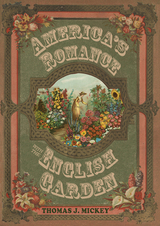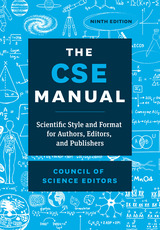
Named one of “the year’s best gardening books” by The Spectator (UK, Nov. 2014)
The 1890s saw a revolution in advertising. Cheap paper, faster printing, rural mail delivery, railroad shipping, and chromolithography combined to pave the way for the first modern, mass-produced catalogs. The most prominent of these, reaching American households by the thousands, were seed and nursery catalogs with beautiful pictures of middle-class homes surrounded by sprawling lawns, exotic plants, and the latest garden accessories—in other words, the quintessential English-style garden.
America’s Romance with the English Garden is the story of tastemakers and homemakers, of savvy businessmen and a growing American middle class eager to buy their products. It’s also the story of the beginnings of the modern garden industry, which seduced the masses with its images and fixed the English garden in the mind of the American consumer. Seed and nursery catalogs delivered aspirational images to front doorsteps from California to Maine, and the English garden became the look of America.

Americans have had a long-standing love affair with the wilderness. As cities grew and frontiers disappeared, film emerged to feed an insatiable curiosity about wildlife. The camera promised to bring us into contact with the animal world, undetected and unarmed. Yet the camera's penetration of this world has inevitably brought human artifice and technology into the picture as well. In the first major analysis of American nature films in the twentieth century, Gregg Mitman shows how our cultural values, scientific needs, and new technologies produced the images that have shaped our contemporary view of wildlife.
Like the museum and the zoo, the nature film sought to recreate the experience of unspoiled nature while appealing to a popular audience, through a blend of scientific research and commercial promotion, education and entertainment, authenticity and artifice. Travelogue-expedition films, like Teddy Roosevelt's African safari, catered to upper- and middle-class patrons who were intrigued by the exotic and entertained by the thrill of big-game hunting and collecting. The proliferation of nature movies and television shows in the 1950s, such as Disney's True-Life Adventures and Marlin Perkins's Wild Kingdom, made nature familiar and accessible to America's baby-boom generation, fostering the environmental activism of the latter part of the twentieth century. Reel Nature reveals the shifting conventions of nature films and their enormous impact on our perceptions of, and politics about, the environment.
Whether crafted to elicit thrills or to educate audiences about the real-life drama of threatened wildlife, nature films then and now reveal much about the yearnings of Americans to be both close to nature and yet distinctly apart.
READERS
Browse our collection.
PUBLISHERS
See BiblioVault's publisher services.
STUDENT SERVICES
Files for college accessibility offices.
UChicago Accessibility Resources
home | accessibility | search | about | contact us
BiblioVault ® 2001 - 2024
The University of Chicago Press









